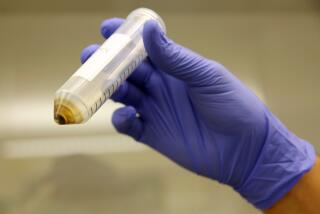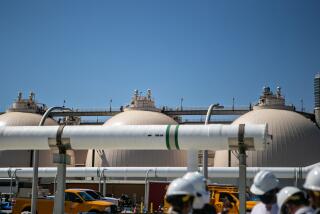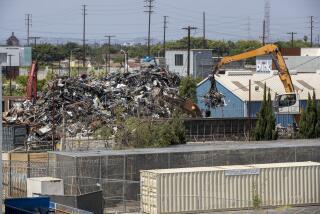Glendale-Burbank to get additional wells to monitor chromium 6
The U.S. Environmental Protection Agency plans to install 30 wells in the Glendale-Burbank area in March to monitor levels of chromium 6 in underground water to get a fuller picture of how extensive the contamination is.
The move is another step in the federal agency’s 2007 investigation into the cancer-causing element’s potential threat to human health and the environment. The investigation will also aid California officials who are considering tighter restrictions on levels of the toxic element allowed in potable water.
Local water contains small amounts of chromium 6 as a result of decades-old underground contamination in the San Fernando Valley industrial corridor, left behind by the aero-tech manufacturing industry.
For years, Glendale has been studying ways to strip the element from its water. In the meantime, Glendale Water & Power has been blending local water with untainted imports from the Metropolitan Water District of Southern California to ensure that its supplies remain well below contamination limits.
The city has so far spent more than $8 million on the project, much of which has come from government grants and payments from a coalition of industry polluters.
About 20 monitoring wells already exist, but the EPA needs more in Glendale, Burbank and Los Angeles to fill in gaps in the data.
“It’s mostly to figure out whether the areas [where] we don’t have wells have contamination,” said Lisa Hanusiak, an EPA project manager.
The EPA plans to collect groundwater samples from the wells every three months for two years, according to a city report. The results will help the EPA determine how best to remove chromium 6 from the groundwater.
The EPA has been working to remove other chemicals across the San Fernando Valley, such as solvents used for machinery degreasing and dry cleaning, since the 1980s, Hanusiak said.
Although Glendale’s chromium 6 cleaning methods aid the EPA’s investigation, the two cleanups are separate projects, Hanusiak said. Glendale is cleaning water it delivers to utility customers, while the EPA must clean a broader affected area.
The $3.2-million project is mostly being paid for by businesses potentially connected to the contamination, including Lockheed Martin, PRC DeSoto, ITT Corp. and Goodrich, Hanusiak said.
Over time, the EPA may find other potential contaminators and would loop them into the long-term study, Hanusiak said. She estimated it will cost the EPA millions more as the investigation continues.
“We have a long road ahead of us,” she said.
More to Read
Start your day right
Sign up for Essential California for news, features and recommendations from the L.A. Times and beyond in your inbox six days a week.
You may occasionally receive promotional content from the Los Angeles Times.






